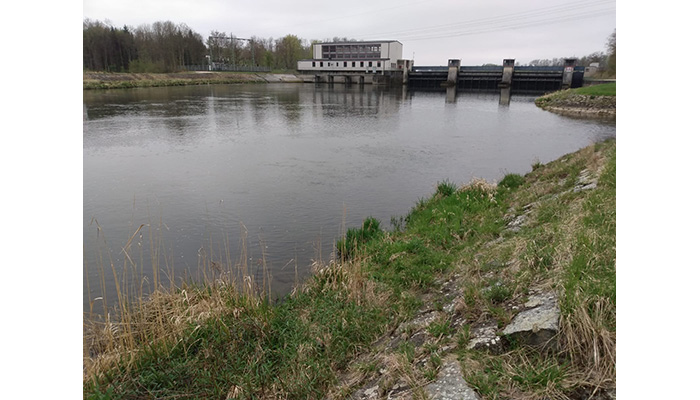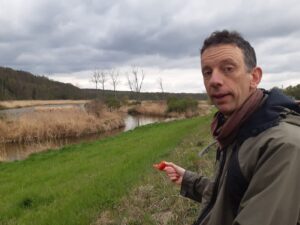
After 15 days of cycling, I’m beginning to feel hopeful that we might even reach Vienna. The latest setback has been catching Covid (I think), which required 18 hours of sleep in our tent to recover.
We’ve been on the Danube for the past few days, currently outside Regensburg Cathedral, where we’ve just joined the Easter Sunday mass. I must admit that we took a train to link between the Rhine and the Danube but only because we’d previously cycled that part of the route through the Black Forest.
On that trip, in 2022, we passed Donaueschingen, the claimed source of the Danube – or so we thought, until we reached Immendingen where the infant river vanished underground. It reappears 12 km south, at Germany’s largest spring, where about 10 m3/s emerges and continues south into Bodensee – and hence joins the Rhine.
A good reminder that hydrology is complicated, with even an apparently simple property like catchment area being as slippery as a Danube sturgeon, subject to change over time. In wetter conditions, the capacity of the sink is overwhelmed and the remaining flow continues down the Danube.
In recent flood studies for the World Bank in more arid parts of the world, such as the Niger River and the Athi River in Kenya, we found catchment areas needed careful thought due to the presence of large endorheic areas (closed basins without an outlet). But might they too start to overflow in very wet conditions?
Our journey along the Rhine and Danube follows in the footsteps of Patrick Leigh Fermor, an Englishman who, aged 18, walked from Holland to Istanbul in 1933-34. Along the Danube he met an eccentric “polymath” who lamented the impending loss of wilderness:
“They talk of building power dams across the Danube and I tremble whenever I think of it. They’ll make the wildest river in Europe as tame as a municipal water works. All those fish from the East they would never come back!” (from P. Leigh Fermor, A Time of Gifts, published in 1977).
The dams arrived in abundance: every few kilometres along the oversized river channel we passed or crossed another, all gates closed to keep the river level high for generation, with what little flow there was passing through the turbines. I don’t know if it had migrated from the Black Sea, but we did see a fish caught by one of the anglers who seem to congregate by each dam.

Next to a wilder part of the Danube
The Danube still has vestiges of wildness: we spotted mazes of channels meandering around reed beds and signs of beaver-felled trees. But I think the 1930s polymath was right to be concerned. While green hydropower is welcome, meddling with the water environment doesn’t always turn out well. For an insight into the consequences, I’d recommend a book by a historian rather than a hydrologist: The Conquest of Nature: Water Landscape, and the Making of Modern Germany by David Blackbourn (2007). He says :
“History can help us to recognize the power of unintended consequences, and there is no other area of human endeavor, with the possible exception of war, where the power of unintended consequences is quite so great as it is in human dealings with the environment… Successive generations have been proved fallible in this respect… each set of proposed new measures promises to turn the trick and finally overcome the ignorance or engineering mistakes or political mistakes of earlier generations… History cannot make us wise but perhaps it can make us a little less foolish”.
For perhaps more on this topic you might like to try EGU session NH1.7 on nature-based solutions for climate change adaptation, co-convened by my JBA colleagues Barry Hankin and Hannah Champion.
Thank you for reading my musings, and thank you to my cycling companion and wife, Beatrice. See you in Vienna, I hope! You may recognise me as the one who can’t stop eating…
Edited by B. Schaefli
Note: the links have been added by the editor and represent her choice.
